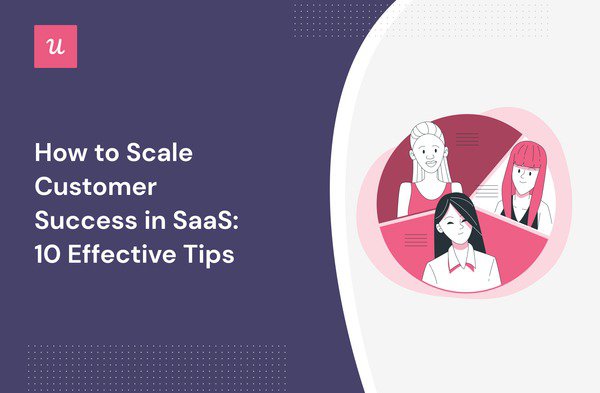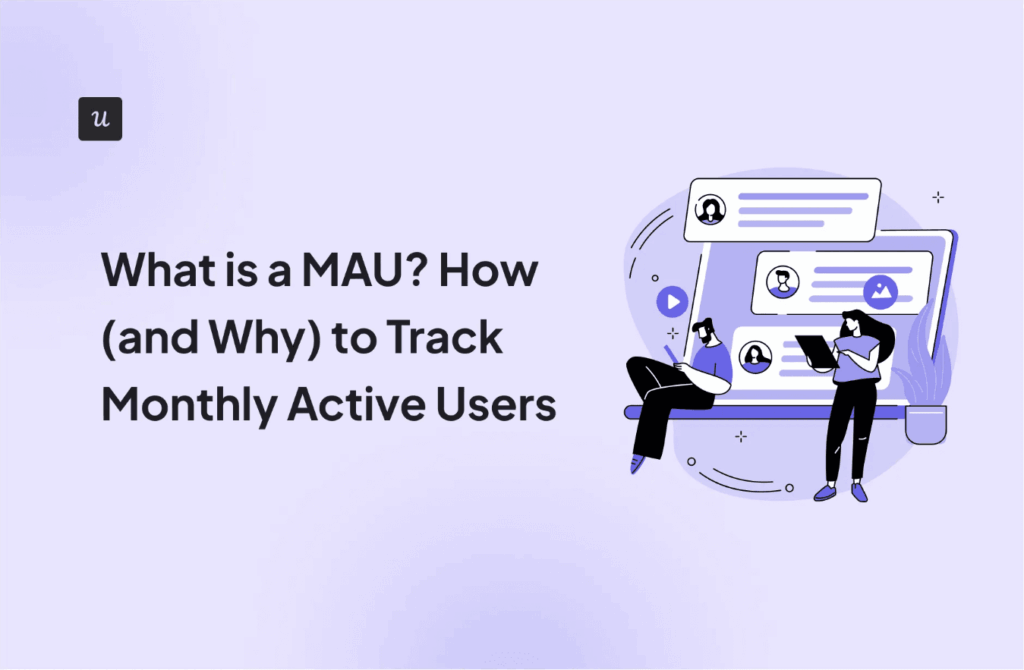
Wondering how to scale customer success in SaaS and drive product growth? If you’re a leading SaaS company, you know that growth is directly tied to helping customers achieve their desired outcomes.
An effective customer success team can, thus, drive revenue growth, reduce churn, and increase customer satisfaction.
This article discusses ten tips that can help you to effectively scale customer success teams in SaaS.
Try Userpilot Now
See Why 1,000+ Teams Choose Userpilot

1. Separate the customer service team from the customer success team
To get started with scaling customer success in SaaS, you must first create a dedicated customer success team.
You can create a customer success organization tasked with connecting with customers and providing them with relevant information to effectively use your product offerings.
This subsequently frees your customer success managers (CSMs) from reactive customer support tasks, leaving them plenty of time for developing and executing customer success plans, managing customer relationships, and proactively identifying customer issues.
Put simply, a dedicated customer success team has more time to give each customer the attention they deserve. This allows them to advocate for the customer’s needs (proactive) long before they open a support ticket.
2. Map out the entire customer journey to better understand customer needs
A detailed customer journey map helps you understand exactly what your customer needs to be successful at each stage of their journey.
A customer journey map charts the customer’s journey from one process to the next. It highlights key touchpoints, the different customers’ expectations at these points, and potential friction areas.

This enables you to develop a customer success strategy tailored to the customer’s specific needs. This strategy should focus on helping customers achieve their desired outcomes and overcome the challenges they face.
3. Personalize the customer experience for new customers
Next, it’s time to personalize the customer experience. Use a welcome survey to collect relevant customer data about your new customer’s needs and goals.
Then, personalize their onboarding by matching their jobs to be done (JTBDs) with relevant features.
This is exactly what Notion does to make its product easier to use for new sign-ups. First, it determines what you’ll be using their product for…

Then, it personalizes your onboarding screen to match your needs.

4. Use an onboarding checklist to help users learn about key features
Personalized onboarding checklists should form a key part of your onboarding process.
A great checklist helps users to identify key features of your product. It guides them through various tasks to get them started with the product, enabling them to get immediate value from it.

5. Implement in-app guidance such as interactive walkthroughs to help users achieve success
Beyond directing new users to the tasks they need to get started, you also want to guide them to navigate these features successfully.
Thus, it would help if you coupled your checklists with interactive walkthroughs. A good walkthrough helps users learn by doing.
Thanks to their interactive nature, these walkthroughs drive customer education and boost user engagement, effectively scaling customer success in a few clicks.

6. Create a resource center to support customers with repeatable issues
Another way to scale customer success in SaaS is to create a resource center to support customers with repeatable issues.
This center can hold a variety of resources, including blog posts, FAQs, webinars, etc., to help solve customer issues. It should be well-organized and easy to find, ensuring that users can easily find what they need.
When implemented correctly, a resource center frees up your customer success manager and team to focus on more strategic initiatives. It drives self-service, enabling customers to solve their issues without raising tickets.

7. Unlock consistent value for your existing customers with webinars
Webinars are a powerful tool for educating customers on your product’s features, helping them learn how to achieve their goals with your product, and fostering a sense of community among your customers.
By offering webinars that are personalized to your customer’s needs, you can provide customers with the knowledge and resources they need to succeed.
Good webinars are timely, informative, and interactive, helping your users to unlock consistent value. This reduces churn, boosts product adoption, and ultimately increases overall customer lifetime value.

8. Collect customer feedback to improve customer success operations
Customer feedback is essential for scaling customer success in SaaS. By collecting and acting on feedback, you can improve your product, your customer success process, and the overall customer experience.
Constantly collect feedback to monitor customer satisfaction with your product. You can collect this feedback through surveys, customer interviews, or even support tickets.

Once you’ve collected this feedback, analyze it to identify patterns and trends. Then, reach out to dissatisfied customers to learn how you can best help them. Finally, get to work creating solutions to their problems.
9. Analyze your customer success process and improve accordingly
After you’ve had your customer success team up and running for a while, it’s time to confirm that your processes are yielding the right results.
You can do this by using product analytics to track feature usage, monitor user progress, and identify friction areas.
As you conduct your analysis, try to see if your users are following the path of success or not. If not, what can you do to drive improvements?

10. Make sure your customer success team members have the necessary digital tools
Finally, for your customer success department to be truly successful, you must provide team members with dedicated customer success platforms and tools to aid their work.
These CS tools contain features like customer engagement analytics, product usage tracking, customer lifecycle analytics, and more. The best tool for you will depend on your company’s needs.
For startup phase companies, this includes tools that help you improve customer experience and track customer behavior, like:
- Userpilot
- Helpscout
- eWebinar
- Wootric, etc.
On the other hand, growth phase companies will benefit from tools that help them automate processes and scale up, like:
- Gainsight
- Totango
- Natero
- Akita, etc.
Conclusion
It takes time and effort to successfully scale customer success in your SaaS. When done correctly, though, it improves customer interactions, bolstering your customer base with high-value customers.
If you’re still in your startup phase, you’ll find Userpilot to be an excellent tool for onboarding customers, collecting behavioral data, and conducting surveys. Book a demo today to learn how we can help you scale your CS operations.







